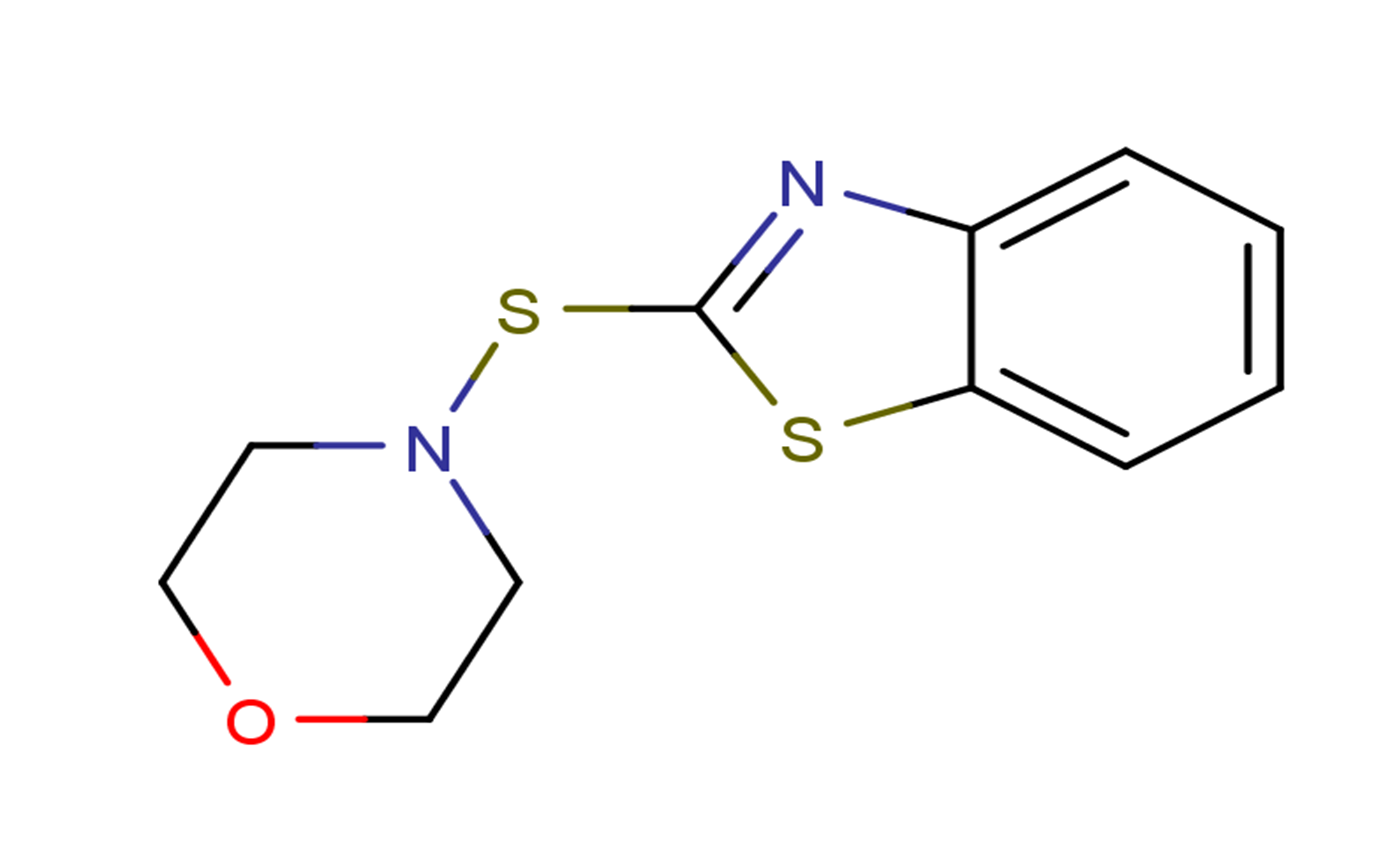
Morpholinylmercaptobenzothiazole
CAS No. 102-77-2
Morpholinylmercaptobenzothiazole( —— )
Catalog No. M23231 CAS No. 102-77-2
Morpholinylmercaptobenzothiazole is an aftereffect rapid vulcanization accelerator.
Purity : >98% (HPLC)
 COA
COA
 Datasheet
Datasheet
 HNMR
HNMR
 HPLC
HPLC
 MSDS
MSDS
 Handing Instructions
Handing Instructions
| Size | Price / USD | Stock | Quantity |
| 5MG | 45 | In Stock |


|
| 10MG | 68 | In Stock |


|
| 25MG | 115 | In Stock |


|
| 50MG | 173 | In Stock |


|
| 100MG | 258 | In Stock |


|
| 200MG | 388 | In Stock |


|
| 500MG | 642 | In Stock |


|
| 1G | Get Quote | In Stock |


|
Biological Information
-
Product NameMorpholinylmercaptobenzothiazole
-
NoteResearch use only, not for human use.
-
Brief DescriptionMorpholinylmercaptobenzothiazole is an aftereffect rapid vulcanization accelerator.
-
DescriptionMorpholinylmercaptobenzothiazole is an aftereffect rapid vulcanization accelerator.
-
In Vitro——
-
In Vivo——
-
Synonyms——
-
PathwayOthers
-
TargetOther Targets
-
RecptorOthers
-
Research Area——
-
Indication——
Chemical Information
-
CAS Number102-77-2
-
Formula Weight252.4
-
Molecular FormulaC11H12N2OS2
-
Purity>98% (HPLC)
-
SolubilityDMSO:10 mM
-
SMILESC1COCCN1SC2=NC3=CC=CC=C3S2
-
Chemical Name——
Shipping & Storage Information
-
Storage(-20℃)
-
ShippingWith Ice Pack
-
Stability≥ 2 years
Reference
1.Basu D K . Amperometric determination of 2-benzothiazole sulphenamide accelerators[J]. Talanta, 1980, 27(8):671-672.
molnova catalog



related products
-
DFHO
DFHO is a Corn homologous ligand that fluoresces yellow upon excitation and is used to image RNA in living cells.
-
Dcimc chloride
3-(2, 6-Dichlorophenyl)-5-methylisoxazole-4-carbonyl chloride has antibiotics activity.
-
7-Geranyloxy-5-metho...
7-Geranyloxy-5-methoxycoumarin is a naturally occurring compound found in many plants, including the bark of the red maple tree.



 Cart
Cart
 sales@molnova.com
sales@molnova.com


